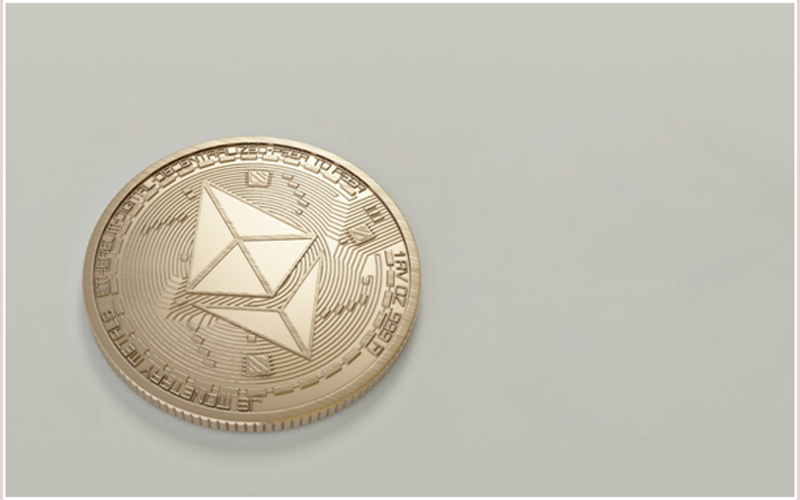It is impossible not to have heard of how NFT technology is taking over the world and changing how users are buying and selling digital and physical assets. From the $69-million-sale of a Beeple artwork on the prestigious Christie’s auction to Jack Dorsey’s first tweet, the NFT technology is more real – and money-spinning – than ever.
While widely used across several industries such as gaming, films, videos, and digital art, the full potential of this type of technology is still unknown. So far, NFT uses have been many – from adding a watermark to a digital artwork to confirming the authenticity of a creator’s artwork.
However, when it comes down to understanding its implications for intellectual property (IP), copyrights, and patents, it is essential to learn more about what NFT is and how it works. Here is an overview of the relationship between NFT ownership and intellectual property rights.

Non-Fungible Tokens (NFT): An Overview
To understand how Non-Fungible Tokens (NFT) are reshaping the way we buy and sell assets, it is important to be clear on the objective and subjective value of items. For example, two $5 bills will have exactly the same values and can be fairly exchanged without a loss of value for neither of the parties involved in the transaction. This is because the two $5 bills have an equal objective value.
However, not all assets have just an objective value. For example, a collectible baseball card can be sold and bought for over $1 billion, but the card itself has a minimal manufacturing cost. Therefore, two different collectible baseball cards will have two different values.
This subjective value is what changes based on who the author of the item is (authority), the number of pieces on the market (scarcity), demand, and previous history.
While you can buy, sell, and exchange physical assets on marketplaces such as eBay, creators had to find another way to exchange digital assets – NFTs.
NFT stands for Non-Fungible Tokens:
- Tokens refer to digital tokens, which are cryptographic certificates that indicate the authenticity and ownership of the asset. Theoretically, everything can be tokenized. You can put a token on digital artwork, on gift cards, or even on physical assets.
- Non-Fungible means that that specific token is unique and not interchangeable with a similar token.
To be clear, dollar bills and bitcoins are fungible, while a valued artwork or intellectual property is not fungible.
Another vital aspect to consider is the fact that NFTs are part of blockchain technology. Being secure, decentralized, and immutable, the blockchain allows for the exchange of NFTs across a worldwide network authentically and transparently.
Why Is NFT Used To Protect IP?
As we have seen, the full potential of NFTs has not yet been exploited. However, thanks to the characteristics of these tokens and blockchain technology, it is easy to see why creators and artists have started using them to confirm the authenticity of a digital asset.
These characteristics include:
- Transparency – blockchain technology tracks every transaction and makes it immediately available to users.
- Standardization and Interoperability – NFTs are standardized, meaning that they can be exchanged on many platforms and across multiple ecosystems.
- Tradability – any user can forge an NFT and trade it on a genuinely open and free market.
- Liquidity – NFTs can be easily bought and sold, turning them into cash
- Immutability – once the initial information is inserted and verified, it cannot be changed. In turn, this ensures the authenticity of a certain asset while also preserving its scarcity by making it impossible for programmers to amend the number of items on the market.
- Programmability – NFTs are not fully programmable by any user only the creator as the cryptographic token represents a unique item. The metadata of each NFT cannot be altered and that gives it the certificate of authenticity.
Because of these characteristics, technology is ideal for creators, inventors, and artists. For example, musicians or filmmakers can use NFTs to register their work on the blockchain, sealing in their authenticity. Once the token is created, it protects it from copyright infringement and manages performance rights.
Thanks to this technology, there is also less need for a third party or intermediary such as an agent or manager, ensuring that the profits from any sale go directly to the creator.
It is also important to keep in mind two benefits of this choice:
- Creators can set up their NFT so that they can receive a fee every time they are traded. This allows them to continue earning on their artwork during future transactions.
- NFTs can be traded for physical assets. An NFT linked to an artwork can be traded, and the new owner can redeem the asset bought.

The Relationship Between NFTs and Digital Assets
As we have seen, the characteristics of NFTs and blockchain environments make them the perfect tools for digital asset trading. However, when looking at the legal aspect of copyrights and intellectual properties, there are some important considerations to make.
- The NFT is not the item. An NFT is no more than a code or set of data that points to the digital asset. An NFT can act as a digital watermark or as a way to confirm the authenticity of an artwork, for example, but it is not the artwork itself.
- NFTs might be temporary – NFT technologies have not been around for long enough to understand the long-term implications of this technology. Indeed, they might stop pointing towards the asset you purchased; they can be deleted or moved.
- Assets are accessible through marketplaces – NFTs are stored on digital ledger accessible through websites or marketplaces. However, in the long-term, these sites might be disrupted or deleted, which can affect your ability to access your NFT.
- They are immutable – their immutability means that once verified, the data they contain cannot be amended or compromised. However, if the original entry contains errors or is false, the NFT will make it impossible to correct it.
Ultimately, in a worldwide digital market, NFTs can be a serial number associated with a unique artwork or intellectual property, reducing the risk of counterfeiting and infringement of copyrights. At the same time, this technology has not been tested for long enough to ensure that it will remain viable in the long term.
And, buyers that are ready to spend millions of dollars on an item will want to know if they can continue to access it and trade it for years to come!
How Can NFT Protect Copyrights And Patents?
As we have seen, NFTs have many benefits when it comes down to protecting the work of a creator. However, NFT ownership is not the same as owning the copyrights over intellectual property.
Generally, in the US, the copyright over a work of art belongs to its creator – even if the creation is then sold to a new owner.
As a general rule, the author or artist is the default owner of the bundle of rights that is copyright – unless there is a specification in the sale contract to pass over the rights to the new asset’s owner. Naturally, this can vary depending on the copyright and intellectual property laws of a specific country.
While NFT can help creators prevent issues such as counterfeiting and theft, it does not strip a creator of its original copyrights over a piece of art or item.
Nonetheless, the transaction does grant some rights to the new owner:
- A buyer does not own the author’s copyright
- The buyer will own the physical asset
- The buyer has the permission to display the artwork
- The buyer cannot make additional copies of the artwork
- The new owner can resell their physical copy to a third party (as per “first sale doctrine”)
The Implications of NFTs for Authors
These are the pillars of copyright and intellectual property laws, and their application in the digital era still falls in a gray area and, most of them are not yet tested in Court.
Nonetheless, if you have created an NFT that relates to your art or intellectual property, you would retain the copyright over it while passing the ownership over the piece of art to the new owner.
Exceptions to this rule include:
- If the seller specifies that the copyright is to be passed onto the new owner
- If there are specifications in the terms and conditions dictated by the platform used for the transaction.
Each transaction that happens through the blockchain is recorded and visible to any user, which guarantees that every resale is legitimate and legal. You can also set up your NFT so that you obtain a percentage of that transaction at every resale.
The Implications of NFTs for Buyers
As an NFT buyer, you won’t only receive the ownership over the NFT that embodies the artwork or asset. You will also obtain a license that specifies how you can reuse and display your work of art without infringing copyright laws.
Just like the transaction is recorded in the blockchain, your ownership is immutable (unless you decide to resell) and verifiable by other users.
By default, in the transaction, you will not receive:
- The right to reproduce the artwork
- The right to modify or transform the item
- The ownership of the actual work of art embedded in the NFT
These terms can change depending on the seller’s terms and the type of license to which the item is subjected. For example, in the case of an object protected by a creative commons license, you might be able to reproduce or modify the asset. The author still retains the ability to put limitations on how the artwork is used and displayed.
How Can NFTs Guarantee The Authenticity of An Artwork?
The use of NFTs in the trading of digital artwork is still so new that the implications of these sales are still unknown. However, what is clear is that NFT technology can solve issues that come with the trading of digital assets, such as illegal reproduction and counterfeit.
And, in some aspects, this technology has been seen to be efficient. Once forged and verified, NFTs cannot be modified or compromised, which makes them ideal for verifying academic credentials, warranties, IDs, birth certificates, and DNA data.
However, it is essential to keep in mind that owning an NFT will not stop others from using and reproducing an image, video, or artwork. Let’s consider the artwork sold by Beeple for $69m. While it has found a new owner, the image can be easily copied, used, shared, and downloaded endless times.
However, what the NFT does transfer is the ownership over the original copy. In many cases, this is compared to an autograph that protects the value of an otherwise broadly accessible piece of intellectual property.
Can You Use NFTs to Transfer Copyright?
As we have seen, as a default, the author or creator of an asset retains the copyright over it – even after a sale. However, while the process is not automatic, NFT does enable a transfer of copyright.
These kinds of transactions are governed through the use of “smart contracts,” which offer guidelines and indications on what rights are granted to the new owner and which ones remain to the author.
While the use of these contracts for the trading of digital artworks and assets is still new, there are already various options that clearly state who owns rights.
Some licenses limit the new owner to non-exclusive rights to copy, use, and display the work of art. Oppositely, others will only grant the rights of personal and non-commercial use. In most cases, the use of the artwork in third-party products, media, and websites is expressly prohibited – which is not different from purchasing music through a platform.
What Kind Of IP Can Be Protected With an NFT?
The potential of this new technology is always in expansion, and it is impossible to foresee where users will take it. However, we already know that it is likely to disrupt several markets – from the music industry to gaming. Since anybody can create an NFT, and NFTs can be associated with any physical and digital asset, there are no limits to how you can use this technology.
- In the film and music production industry, NFTs are used to eliminate third-party identities, such as agents in charge of policing the use of a specific artwork.
- In the gaming industry, developers can create and sell items, which can contribute to the user experience.
- In the real estate sector, financial patented products such as Switch Point Calculator may be protected through NFTs.
While these are all extremely useful ways to use NFT, let’s not forget the disruptions that games such as CryptoKitties caused as the NFT technology was just emerging.
Bottom Line
Non-fungible tokens are still moving their first steps in today’s worldwide economy, but they already have the power to disrupt entire markets. They can be used to protect patents and copyrights because they are immutable and impossible to steal and compromise.
So, embedding a work of art or intellectual property in an NFT allows you to better control its use and sale in a digital world where it can be difficult to track and protect creation. However, the future uses, potential, and lifespan of this technology are still unforeseeable. Comment on this article is invited as NFTs and the market are rapidly changing.
DISCLAIMER
This article is for general information only about a rapidly changing information technology market segment. Reliance should not be placed on the information in this article, but you should seek personal advice related to your personal circumstances from an appropriate professional.
This website is about why you need to get advice early. It provides general information only and is not a recommendation to act in any particular way other than to seek advice early. In the United Kingdom, the starting place always should always be to Ring The Money Advice Service (0800 138 7777). Their advice is free and impartial.
If you wish to comment on an article or post, please use the contact form below.





